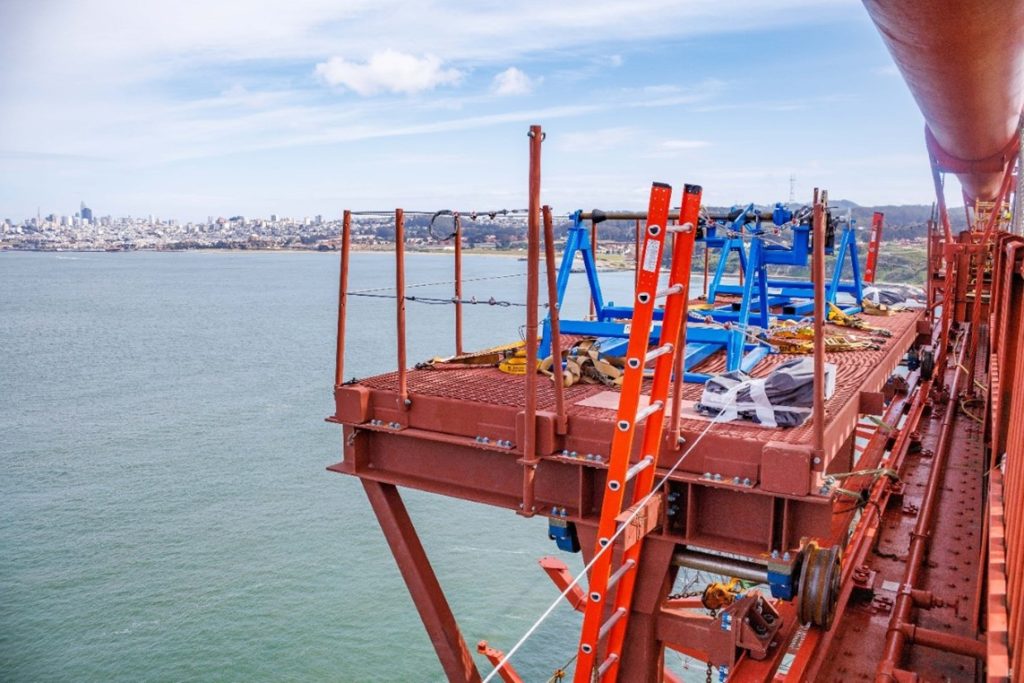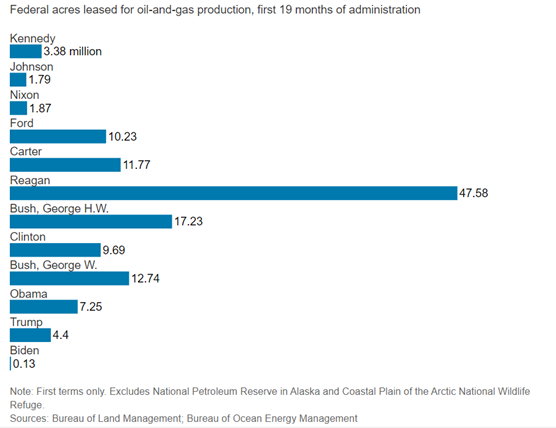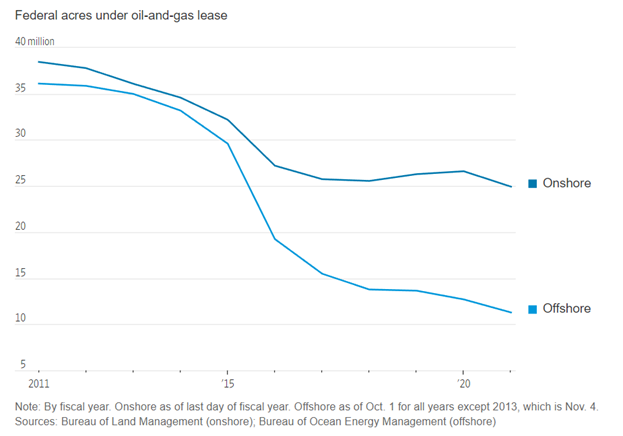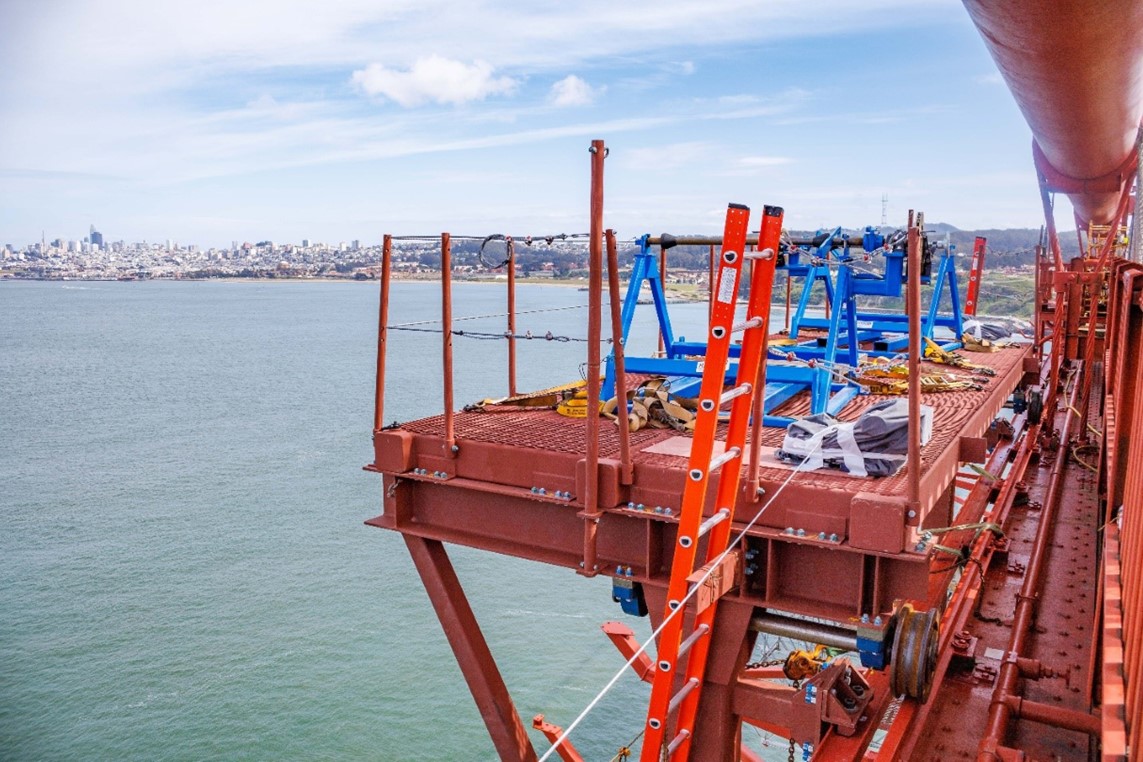
How Long Can the Imbalance of Energy Production and Demand Continue?
During the first 19 months after taking office, the Biden administration has leased fewer acres for oil and gas drilling than any president’s first 19 months since Harry Truman (1945-46). Not long ago, Candidate Biden promised to stop drilling on federal lands to help force a transition to cleaner energy. This promise has mostly been kept. But it is getting more difficult for the 46th POTUS. Demand pressures and reduced output caused oil prices to already be off its pandemic lows when Russia’s invasion of Ukraine gave way to a semi-embargo on Russian goods, which included oil and gas.
President Biden’s Interior Department leased 126,228 acres for drilling through Aug. 20, during his first 19 months in office. Analysts at the Wall Street Journal uncovered that no president since Nixon in 1969-70 leased out fewer than 4.4 million acres at this stage in their occupation of the White House.
Truman was the most recent to lease out fewer acres, 65,658. This was just after WWII at a time when offshore drilling was just beginning and the federal government didn’t yet control the deep-water leases that are the largest portion of the federal oil-and-gas program today.

The leasing program had tapered during the past decade as fracking shale became preferable to drilling offshore or on federal land. Biden’s use of land and deep-sea leases represents a decline of 97% as compared to the same time period of Trump’s stewardship which had declined 39% compared to his predecessor.
A record high number of drilling permits for existing leases were filed last year, according to The Interior Department . Department spokeswoman Melissa Schwartz told the Wall Street Journal that industry trends have driven most U.S. production to private and state-owned lands, and that of the roughly 35 million acres now leased from the federal government, about 60% aren’t actively producing.
As for offshore leases, the Biden administration has yet to complete a sale. It did hold one, on Nov. 17, offering 80 million acres in the Gulf of Mexico in a sale originally proposed by the Trump administration that would have been the largest offshore sale in U.S. history. It sold 1.7 million acres, but a federal judge invalidated the sale in January, ruling that the administration failed to do a proper environmental analysis.

One can either appreciate the resolve of the current administration in its effort to foster fewer emmited pollutants, or fault him for his role in curbing energy production and its contribution to higher prices and less energy independence. If the measurement had been made as of the first 17 months of his presidency, the acreage number would be zero, there were no onshore lease sales. The government then held five June 29-30.
Leases for oil and natural gas drilling is the beginning of the petroleum product supply chain. But, while there is no shortage of federal land, an escalation of lease sales now, or under any successor’s policies, would take years to build and deliver its first barrel.
The increase in gasoline and oil prices has caused the president to take steps to boost oil supplies. In late March the President said he’d be releasing as much as 180 million gallons from the strategic oil reserves over the following 180 days. This was unprecedented in its magnitude and a response to the doubling and tripling of gasoline prices.
Energy independence has been the goal of many of Biden’s predecessors. We live at a time when the call has been to prioritize policy that encourages transitioning to non-fossil fuel. This naturally has caused investors in resources like lithium and uranium to see price increases. Large oil price increases have also come from lower growth of petroleum supplies. Part of the relief valve the administration used, is tapping into the finite supply of strategic oil reserves. The current pace of using this resource is unsustainable.
This could indicate that energy investors, in fossil fuels and alternatives may see strong markets with demand outstripping supply going forward for some time.
Paul Hoffman
Managing Editor, Channelchek
Sources
https://www.blm.gov/programs/energy-and-minerals/oil-and-gas/leasing/regional-lease-sales
https://www.blm.gov/programs/energy-and-minerals/oil-and-gas/leasing
https://www.tri-cityherald.com/news/environment/article261303202.html
https://www.washingtonpost.com/climate-environment/2022/03/31/strategic-petroleum-reserve-release-biden/
https://www.wsj.com/articles/federal-oil-leases-slow-to-a-trickle-under-biden-11662230816
